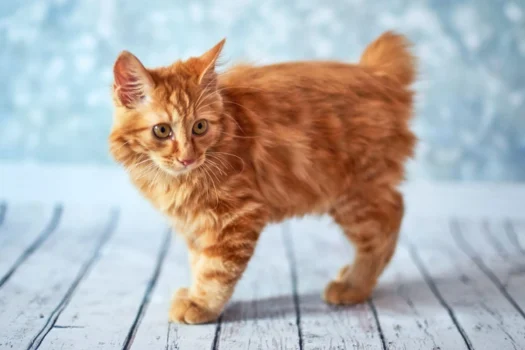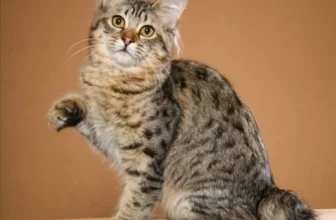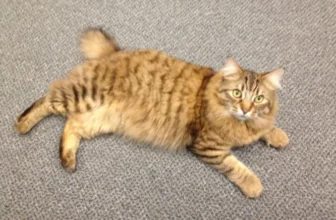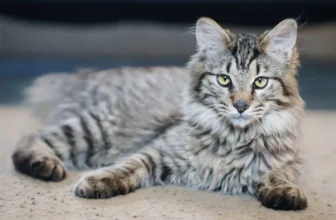Have you ever heard of the American Bobtail? Their unique appearance and charming personalities make them a favorite among many cat owners. But have you ever wondered how this breed came to be? It’s curious to think about how different breeds have influenced the development of the American Bobtail. In this article, we’ll explore the fascinating background of these cats, from their origins to their physical traits to their personalities. Join us on a journey to discover the intriguing world of the American Bobtail.
The Origins of American Bobtail Cats
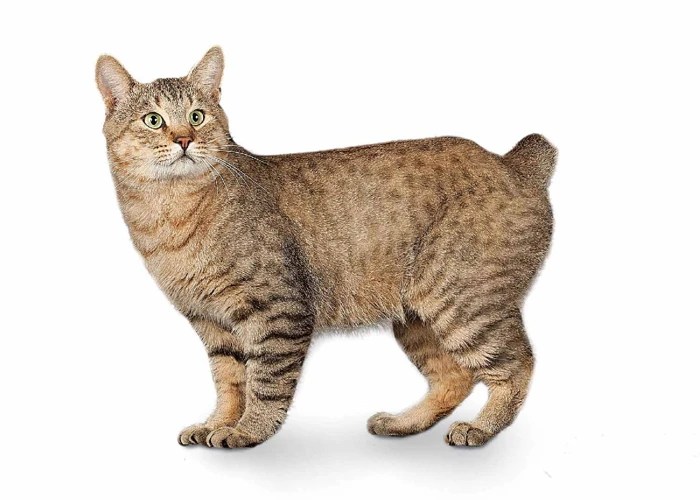
It’s fascinating to wonder where the American Bobtail breed originated from. Many theories are circulating regarding this breed’s ancestors, and in this section, we will delve deeper into its history to quench your curiosity. American Bobtails are believed to have a rich ancestry that includes both the Northern American wildcat and domestic cats from different parts of the world. The breed is known for its short, furry tail and muscular built, characterized by a robust and friendly personality. Let’s explore the evolutionary roots of the American Bobtail breed and see how it came to be one of the most popular domestic feline breeds today. For more information, please visit American Bobtail Ancestors.
Siamese Cats
The Siamese cat is one of the breeds that played a crucial role in the development of the American Bobtail breed. This ancient and elegant breed comes from Thailand, formerly known as Siam, and is believed to have been an essential part of the Royal Siamese households, where they were considered sacred and worshipped.
Physical Traits
The Siamese cats were bred for their distinctive appearance. They are known for their triangular-shaped head, large ears, long and sleek body, and deep blue, almond-shaped eyes. However, their most unique trait is the pointed coloration of their coat, which means that the coloring is in the extremities of their body, such as their face, paws, and tail.
Influence on the American Bobtail Breed
The Siamese cats played an essential role in the development of the American Bobtail breed because of their striking physical appearance. Some of the traits that were passed on to the American Bobtail breed include their large size, long and athletic body, and their triangular-shaped head.
Like the Siamese, the American Bobtail breed is known for their stunning colored eyes, which is typically shades of green, yellow, or blue.
It is interesting to note that the Siamese cat’s coat coloring played an essential role in the development of the American Bobtail breed’s coat pattern. The Bobtail breed inherited the pointing gene from the Siamese, which results in their distinctive coat pattern. Unlike the Siamese, the American Bobtail breed has a wide range of coat colors and patterns, including tabby, tortoiseshell, and pointed patterns.
Conclusion
Siamese cats played a significant role in the development of the physical traits and coat pattern of the American Bobtail breed. Their unique physical appearance was passed down to the American Bobtail breed, making it an elegant and distinct breed of cat. It is fascinating to learn about the different breeds that contributed to the development of the American Bobtail breed.
Manx Cats
Manx cats have played an essential role in the development of the American Bobtail breed. The unique genetic mutation that causes the shortened or absent tail of Manx cats is also present in American Bobtails. This genetic factor is what initially drew breeders’ attention to Manx cats as potential breeding partners for American Bobtails.
In the table below, you can see the comparison between the characteristics of Manx cats and American Bobtails.
| Manx Cats | American Bobtail Cats | |
|---|---|---|
| Physical Appearance | Shortened or completely absent tail; round head; broad chest; sturdy build | Naturally short tail; large, sturdy, and well-muscled body; broad head; almond-shaped eyes |
| Temperament | Intelligent, affectionate, playful, and loyal | Intelligent, loyal, and playful; known for their dog-like behavior; highly sociable with humans and other pets |
| Grooming Needs | Moderate grooming needs; short, dense coat that sheds minimally; occasional baths and brushing | Moderate grooming needs; short, dense coat that sheds seasonally; weekly brushing recommended |
It’s interesting to note that while these two breeds share many physical and temperamental characteristics, Manx cats have a tendency towards spinal cord defects due to the shortened tail. This is why breeding between the two breeds requires careful consideration to ensure that the resulting offspring aren’t prone to such health issues.
Manx cats’ contribution to the American Bobtail breed has been significant, and their unique genetic makeup has played a critical role in shaping the breed’s physical appearance and temperament. Their influence, along with other breeds like the Siamese and the North American Wildcat, has resulted in a breed that’s highly sought after by many feline enthusiasts.
The Characteristics of American Bobtail Cats
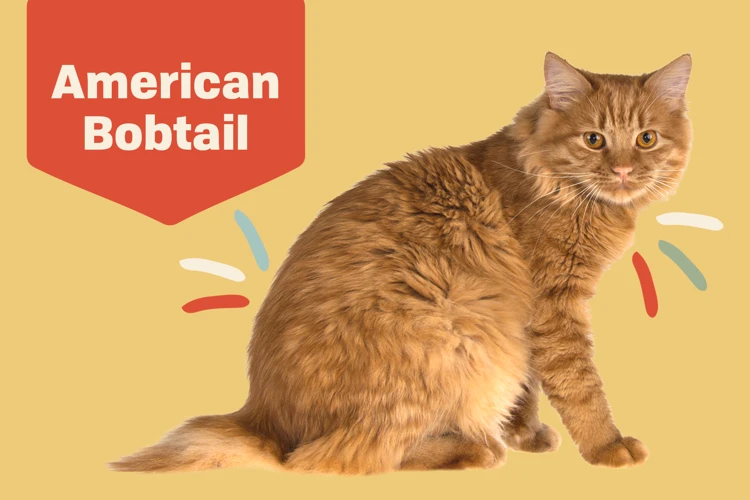
When it comes to the physical characteristics of American Bobtail cats, there are several unique features that distinguish them from other breeds. These cats are known for their short, muscular bodies, expressive eyes, and their signature bobbed tails, which can vary in length and degree of curliness. However, the origins of these distinctive characteristics are not entirely clear. Some believe that the breed was developed through natural mutations and selective breeding, while others point to the influence of other breeds throughout history. Regardless of their origin, American Bobtails are one of the most fascinating feline breeds in the world, and their unique features are sure to capture the hearts of cat lovers everywhere. To explore the history and characteristics of this extraordinary breed in more detail, let’s take a closer look at the role of the North American wildcat, Siamese cats, and Manx cats in their development.
North American Wildcat
The North American Wildcat is considered to be the primary genetic source of the American Bobtail breed. This wildcat’s genes are responsible for the short, muscular build and the distinctive bobtail of the American Bobtail. The North American Wildcat, also known as a lynx, has a muscular build and is built for short bursts of intense activity, which is also present in American Bobtails.
What sets the American Bobtail apart from the North American Wildcat is its friendly and sociable personality. American Bobtails are known for their playful and affectionate nature, while the North American Wildcat is a solitary animal that tends to avoid human interaction. However, the wildcat’s genetic contribution is still significant in the development of the breed.
Due to their wildcat ancestry, American Bobtails are highly active and require daily exercise and mental stimulation. They are also known for their hunting abilities and playful nature, both of which are traits inherited from the North American Wildcat.
It is important to note that despite their wildcat ancestry, the American Bobtail is a domesticated breed and is not considered a hybrid or exotic animal. It is simply a breed of domestic cat that has had the influence of the North American Wildcat in its development.
The North American Wildcat played a significant role in the development of the American Bobtail breed, contributing to its short, muscular build and distinctive bobtail. While the breed’s wildcat ancestry is evident in its physical characteristics and behavior, the American Bobtail is a domesticated cat that is beloved for its playful and affectionate nature.
How Siamese and Manx Influence the Physical Appearance of American Bobtails
Siamese and Manx cats have played a significant role in influencing the physical appearance of American Bobtail cats. Here are some of the ways they have contributed to the unique appearance of this breed:
- Body Shape: The Manx cat is known for its shortened tail and round body, while the Siamese has a slender, athletic build. American Bobtail cats inherited the stocky build of the Manx, which gives them a powerful look. But they also have the long, lean lines of the Siamese that make them appear agile and graceful.
- Fur: Siamese and Manx cats both have short, dense fur, which America Bobtails also have. However, Bobtails have a more shaggy, unkempt look that sets them apart from their ancestors. This is due to the influence of the North American wildcat, which is also believed to have contributed to the formation of this breed.
- Ears: Siamese cats have triangular ears set low on their heads, while Manx cats have small, rounded ears. American Bobtails inherited the triangular shape from the Siamese but also have a slightly rounded tip, thanks to the Manx influence.
- Eyes: The almond-shaped, blue eyes of the Siamese are one of its most distinctive features, while the Manx typically has round eyes. American Bobtails have a variety of eye colors, but the almond shape of the Siamese eye is often present.
It’s fascinating to see how different breeds have contributed to the unique features of the American Bobtail. If you want to learn more about the history and evolution of this breed, check out our article on the evolution of American Bobtail history.
Personality Traits of American Bobtail Cats
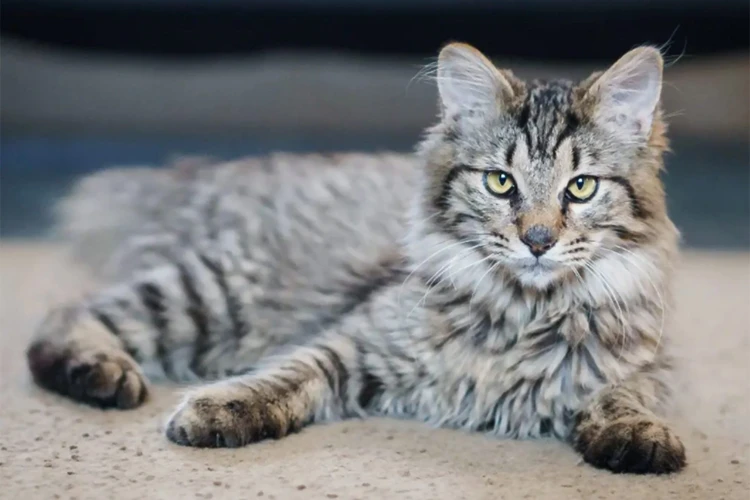
As fascinating as the physical appearance of American Bobtail cats is their unique personality. These felines have distinctive character traits that make them an attractive option for families seeking a loyal and affectionate companion. In this section, we will delve into the temperament of these cats and see why they have become such a popular breed among pet owners. We’ll also explore the impact of other breeds on their personalities, including the Himalayan and Siamese breeds, and how their lineage played a role.
The Himalayan Cat
The Himalayan cat, a breed created through crossbreeding Persian and Siamese cats, played a significant role in the development of American Bobtail cats. It is known for its striking blue eyes and long, fluffy fur that requires regular grooming.
Many American Bobtail cat owners have noticed that their pets share some personality traits with Himalayan cats. Both breeds are typically affectionate, loyal, and enjoy spending time with people. However, whereas Himalayan cats are more laidback, American Bobtail cats are more active and playful.
In terms of physical appearance, it is believed that the Himalayan cat contributed to the American Bobtail’s characteristic fluffy tail. While the Himalayan cat’s tail is typically straight, it still possesses a similar texture and thickness to that of the American Bobtail’s iconic bushy tail. Additionally, like American Bobtails, Himalayan cats are attention-grabbers because of their distinctive looks that incorporate the Siamese coloration: a light-colored body with darker fur on the face, feet, and tail.
Interestingly, there are several Native American legends that mention tailless cats, similar to the American Bobtail breed. These legends suggest that the presence of tailless cats in North America existed long before the development of the American Bobtail breed. Whether these tailless cats influenced the creation of the American Bobtail is unclear, but it is an intriguing possibility. You can read more about these legends and the history of the American Bobtail breed in our article on Native American Legends and the Bobtail Breed.
Siamese Cats
Siamese cats have played a crucial role in the development of American Bobtail cats. They were imported to the United States from Thailand in the late 1800s, and many believe that they were crossbred with local cats to create the American Bobtail breed.
Siamese cats are known for their unique coat patterns, which often feature dark points on a lighter body. This distinctive look was passed down to American Bobtail cats, along with other physical traits such as their almond-shaped eyes and pointed ears. Siamese cats are also known for their sociable and outgoing personalities. They are very vocal and love attention. These personality traits were also inherited by American Bobtail cats, making them social and interactive pets that love playing with their owners.
A comparison of Siamese cats and American Bobtail cats can be seen in the following table:
| Siamese Cats | American Bobtail Cats | |
|---|---|---|
| Coat | Distinctive patterns with dark points on a lighter body | Varies in length but often features unique patterns |
| Physical Traits | Almond-shaped eyes, pointed ears, and muscular build | Bobbed tail, muscular build, and almond-shaped eyes |
| Personality | Sociable, vocal, and loves attention | Social, interactive, and playful with their owners |
Siamese cats have had a significant influence on the physical and behavioral characteristics of American Bobtail cats. They have helped create a unique breed that is loved by many. As a result, American Bobtail cats are frequently exhibited and owned by famous personalities. You can learn more about history of this breed and famous people who owned them in our Famous Historical Figures with American Bobtails article or read about the breed’s feline exhibition history in our American Bobtail Feline Exhibition History article.
Overview of American Bobtail Cats
American Bobtail cats are a unique breed that have gained popularity due to their distinctive appearance and friendly temperament. These cats are known for their short, bobbed tails, which give them a wild, exotic look. In addition to their physical characteristics, American Bobtails are also beloved for their loyal and affectionate personalities.
One of the most notable physical features of American Bobtail cats is their tails. These cats have a naturally short tail, which is typically between one and four inches long. The tail is thick and has a slightly curved tip, giving it a distinctive appearance. Interestingly, the tail is not the result of selective breeding, but rather a naturally occurring genetic mutation that has been passed down through generations of cats.
In addition to their unique tails, American Bobtail cats have other distinctive physical characteristics. They are muscular and athletic cats, with a broad, strong build. They have large, expressive eyes in colors ranging from green to gold. Their coats come in a variety of patterns and colors, from solid black or white, to tabby, calico, or tortoiseshell.
While American Bobtail cats have a wild and exotic appearance, they are actually very social and friendly cats. They love to be around their human family, and will often follow them from room to room. They are playful and active, but also enjoy snuggling up for a nap in a cozy spot. American Bobtail cats are also known for their intelligence and problem-solving skills, which can make them a joy to train.
American Bobtail cats are a unique and wonderful breed that make great pets for families and individuals alike. They are loyal, affectionate, and playful, while also being beautiful and distinctive in their appearance. Whether you are looking for a new furry friend or simply want to learn more about this fascinating breed, American Bobtails are definitely worth a closer look.
Conclusion
After exploring the fascinating history of American Bobtail cats and their unique characteristics and personality traits, it’s clear that this breed is truly special. It’s remarkable to see how the influence of other breeds such as Siamese, Manx, Himalayan, and even the North American wildcat have contributed to the development of this beloved breed.
One of the most striking features of American Bobtails is their physical appearance. This breed exhibits a range of coat colors and patterns, but all American Bobtails have a distinct bobbed tail that makes them easily recognizable. As we explored earlier, the Manx and Siamese breeds contributed to this trait, as well as the distinctive body shape and pattern of this breed. But the wildcat influence cannot be ignored, as the American Bobtail’s wild appearance and muscular build also set them apart from other breeds.
Aside from their physical appearance, American Bobtails are also known for their playful and affectionate personalities. These cats are true people-lovers and enjoy playing with their humans and exploring their surroundings. The Siamese and Himalayan breeds have contributed to the American Bobtail’s outgoing and friendly disposition, making them a great choice for families with children or other pets.
In conclusion, the American Bobtail is a unique and special breed that has grown in popularity over the years. Their wild appearance, playful personalities, and distinct physical features make them a favorite among cat lovers. Understanding the influence of other breeds in their development can help us appreciate the history behind this wonderful breed even more. If you’re considering adding an American Bobtail to your family, you’re sure to be in for a real treat!
Frequently Asked Questions
What is the history of American Bobtail cats?
American Bobtail cats were first seen in the 1960s and 1970s in Arizona, United States. They were the result of natural breeding between domestic shorthair cats and a short-tailed wild cat native to North America, which created the distinctive look of American Bobtails.
What breeds were involved in creating American Bobtail cats?
The North American wildcat, Siamese cats, and Manx cats are the main breeds that contributed to the development of American Bobtail cats.
What is the physical appearance of American Bobtail cats?
American Bobtail cats have a muscular build with a short, bobbed tail. They have a wild look, with a broad head and almond-shaped eyes. They come in a variety of colors and patterns, including tabby, calico, and solid colors like black and white.
What is the temperament of American Bobtail cats?
American Bobtail cats are known for their friendly and social nature. They are intelligent and adaptable, and they enjoy playing and cuddling with their owners.
Are American Bobtail cats easy to train?
Yes, American Bobtail cats are highly trainable. They are intelligent and eager to please, which makes them quick learners. They can be taught tricks and commands using positive reinforcement techniques such as treats and praise.
What are some common health issues in American Bobtail cats?
Like all cats, American Bobtails can be prone to certain health issues. Some common ones include hip dysplasia, urinary tract infections, and heart problems. Regular check-ups with a veterinarian can help catch any health issues early.
Are American Bobtail cats good with children?
Yes, American Bobtail cats can be great companions for children. They are playful and affectionate, and they enjoy being around people of all ages. However, it’s important to supervise young children around cats and teach them how to properly handle and interact with them.
Do American Bobtail cats need a lot of exercise?
While American Bobtail cats enjoy playing, they don’t require a lot of exercise. They are happy with short play sessions throughout the day and occasional outdoor time if possible. Indoor environments with plenty of toys and climbing opportunities can provide plenty of stimulation for these cats.
Do American Bobtail cats shed a lot of fur?
While American Bobtail cats do shed, their short hair means that they don’t shed excessively. Regular grooming with a brush or comb can help remove loose hair and keep their coat shiny and healthy.
Are American Bobtail cats hypoallergenic?
No, American Bobtail cats are not considered hypoallergenic. They do produce dander, which can trigger allergies in some people. However, some individuals with allergies may find that they are less affected by certain breeds or individuals, and it’s always a good idea to spend time around a cat before committing to ownership.

